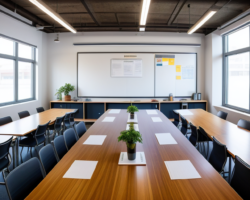Are you tired of the same old furniture in your home? Do you want to add a unique and personal touch to your living space? Then it’s time to get creative and repurpose your old furniture into functional pieces that will breathe new life into your home decor. In this blog post, we’ll explore the art of repurposing old furniture and transforming it into something new and beautiful. From choosing the right furniture to adding functionality and decorating the finished piece, we’ll cover everything you need to know to get started on your DIY repurposing project. Whether you’re a seasoned DIY enthusiast or a beginner looking for a fun and rewarding project, this blog post will provide you with the tips, ideas, and step-by-step guidance you need to turn your old furniture into something truly special. So, grab your tools and get ready to unleash your creativity as we dive into the world of DIY furniture repurposing.
Choosing the Right Furniture for Repurposing
When it comes to repurposing furniture, the first and most important step is choosing the right pieces to work with. Whether you’re a seasoned DIY enthusiast or just starting out, the right furniture can make all the difference in your project. Look for pieces that are sturdy and well-built, with minimal damage or wear and tear. Solid wood furniture is often the best choice, as it can be easily sanded down and refinished for a fresh new look.
Another important factor to consider when choosing furniture for repurposing is the style and design. If you have a specific vision in mind for the finished piece, look for furniture that matches or complements that style. It’s also helpful to think about the functionality of the piece – will it serve its original purpose, or will you be repurposing it for a different use?
Consider the size of the furniture as well. If you’re working in a small space, a large and bulky piece might not be the best choice. On the other hand, if you have a big room to fill, a small piece might get lost in the space. Take measurements and think about how the piece will fit into the room once it’s been repurposed.
Lastly, don’t be afraid to get creative with your furniture choices. Sometimes the most unexpected pieces can turn into beautiful repurposed furniture with a little bit of imagination and elbow grease. Keep an open mind and be willing to think outside the box when choosing pieces to work with.
Prepping and Cleaning Old Furniture
When it comes to prepping and cleaning old furniture, there are several important steps to take to ensure the best results. Firstly, it’s essential to start by removing any existing hardware, such as knobs or handles, and storing them in a safe place. This will make the cleaning process much easier and prevent the risk of damaging the hardware. Next, use a gentle wood cleaner or a mixture of water and mild soap to gently clean the surface of the furniture. Be sure to test any cleaning products on a small, inconspicuous area first to ensure they won’t damage the finish.
After cleaning the furniture, it’s important to let it dry completely before moving on to the next step. This will prevent any potential damage to the wood or finish. Once the furniture is dry, give it a light sanding to remove any existing finish or imperfections. Use a fine-grit sandpaper and sand in the direction of the wood grain for the best results. This will provide a smooth and even surface for the next steps in the repurposing process.
Additionally, it’s important to consider any repairs that may be needed before moving forward with repurposing the furniture. This could include filling in any cracks or holes, or tightening loose joints. Taking the time to make these repairs will ensure that the final result is sturdy and long-lasting. Lastly, be sure to thoroughly clean the furniture again after making any repairs to remove any excess dust or debris.
Overall, prepping and cleaning old furniture is a crucial step in the repurposing process. By taking the time to properly clean and prepare the furniture, you’ll be setting the stage for a successful and satisfying repurposing project.
Creative Ideas for Repurposing Furniture
Repurposing furniture can be a fun and rewarding way to breathe new life into old pieces. Whether you are looking to update your home’s decor or simply want to get creative with your furniture, there are countless ways to repurpose old items. One creative idea for repurposing furniture is to turn an old dresser into a stylish kitchen island. By removing the top drawers and adding a butcher block or countertop, you can create a unique and functional piece for your kitchen.
Another creative idea for repurposing furniture is to transform an old door into a headboard. By sanding down the door and adding a fresh coat of paint or stain, you can create a one-of-a-kind headboard for your bed. This is a great way to add a touch of vintage charm to your bedroom while also saving money on a new headboard.
If you have an old bookshelf that is no longer serving its original purpose, consider turning it into a stylish bar cart. By removing the shelves and adding some wheels, you can create a portable and unique piece for entertaining guests. This is a great way to repurpose an old item while also adding a functional and stylish piece to your home.
Finally, consider repurposing old chairs by turning them into outdoor planters. By removing the seat and adding a pot or planter, you can create a charming and whimsical addition to your garden or outdoor space. This is a great way to add a pop of color and greenery to your outdoor decor while also repurposing old furniture in a creative and unique way.
Tools and Materials Needed for DIY Repurposing
When it comes to DIY repurposing projects, having the right tools and materials is essential to ensure a successful outcome. Whether you’re looking to transform an old piece of furniture into something entirely new or simply give it a fresh coat of paint, having the right supplies on hand can make all the difference.
One of the most important tools for DIY repurposing is a good quality sander. This will help you smooth out any rough edges or imperfections in the wood, allowing you to achieve a professional finish. Additionally, a set of quality paintbrushes and a reliable paint sprayer can also be invaluable when it comes to applying new finishes or colors to your repurposed furniture.
In terms of materials, a high-quality wood glue is a must-have for any DIY repurposing project. This will ensure that any new pieces you add to your furniture will stay firmly in place. Additionally, sandpaper in a variety of grits, wood filler, and paint or stain in your desired color are all essential materials to have on hand.
By investing in the right tools and materials for your DIY repurposing projects, you can ensure that the end result is not only visually appealing but also durable and long-lasting. With the right supplies, the possibilities for transforming old furniture into something new and beautiful are endless!
Step-by-Step Guide on Repurposing Old Furniture
Repurposing old furniture can be a fun and rewarding project that allows you to breathe new life into old, worn-out pieces. Whether you have a family heirloom that needs a refresh or you found a diamond in the rough at a thrift store, repurposing furniture is a great way to showcase your creativity and DIY skills.
First, start by assessing the condition of the piece of furniture. Look for any structural damage, missing parts, or major flaws that need to be addressed before you can begin the repurposing process. Make sure the piece is clean and free of any dust or debris.
Next, decide on the new purpose or function you want the furniture to serve. Whether it’s turning an old dresser into a kitchen island or transforming a coffee table into a pet bed, having a clear vision for the end result will guide your repurposing process.
Once you have a plan in place, gather the necessary tools and materials for the project. This may include sandpaper, paint or stain, brushes, hardware, and other supplies specific to the type of furniture you’re repurposing. Make sure to use protective gear such as gloves and a mask when working with chemicals or sanding materials.
Now, it’s time to start the actual repurposing process. This may involve sanding down the furniture to remove old finishes, applying new paint or stain, adding new hardware, or making structural modifications as needed. Take your time and pay attention to detail to ensure a professional-looking end result.
Lastly, add the finishing touches to your repurposed furniture. This may include decorative elements, distressing techniques, or any other final touches that will enhance the overall look and function of the piece. Step back and admire your handiwork, knowing that you’ve successfully repurposed old furniture into something new and beautiful.
Adding Functionality to Repurposed Furniture
When repurposing old furniture, it’s important to not only focus on the aesthetic aspect, but also on how to add functionality to the piece. One way to do this is by assessing the needs of the space where the furniture will be placed. For example, if you’re repurposing a coffee table, you can add storage compartments underneath or on the sides to hold magazines, books, or even extra blankets. This not only adds functionality to the piece, but also helps to keep the space organized.
Another way to add functionality to repurposed furniture is by incorporating multi-purpose elements. For instance, if you’re repurposing a dresser, you can add a fold-down desk surface to create a small workspace. This allows the piece to serve a dual purpose while maximizing the use of space. The key is to think outside the box and get creative with the repurposing process.
Additionally, you can also consider incorporating modern technology into the repurposed furniture to enhance its functionality. For example, adding built-in charging stations or wireless charging pads to a repurposed nightstand or side table can make the piece more convenient and user-friendly in today’s tech-driven world. This not only adds practicality to the furniture, but also brings it up to date with current trends.
Lastly, don’t forget to consider the ergonomics of the repurposed furniture. Whether it’s adding adjustable height to a repurposed desk or improving the seating comfort of a repurposed chair, incorporating ergonomic features can greatly enhance the functionality and usability of the piece, making it more enjoyable for everyday use.
Tips for Finishing and Decorating Repurposed Furniture
When repurposing old furniture, the finishing and decorating stage is crucial in bringing new life to the piece. One important tip is to sand down the surface of the furniture to create a smooth and even base for painting or staining. This will ensure that the new finish adheres properly and looks professional.
Another tip for finishing and decorating repurposed furniture is to choose the right paint or stain for the job. Consider the overall style you want to achieve and select a finish that complements the piece. Whether you opt for a distressed, shabby chic look or a sleek, modern style, the type of paint or stain you choose will play a significant role in achieving the desired effect.
Additionally, when it comes to decorating repurposed furniture, consider adding unique hardware or decorative elements. Swapping out old knobs and pulls for new, stylish hardware can instantly update the look of a piece. Furthermore, adding embellishments such as stencils, decals, or even decoupage can add a personalized touch to the furniture.
Lastly, don’t forget the importance of sealing and protecting the new finish. Applying a clear coat of polyurethane or furniture wax will not only protect the surface but also enhance the overall appearance and durability of the repurposed furniture.





